-
Towards Mt. Tadagatake, Where Gods Reside
Heading east from Obama Bay and leaving the sound of the gentle waves behind, you pass through the city of Obama and along the meandering Tada River as mountains come into view. One of them is Mt. Tadagatake, which pilgrims have been climbing in the hopes of obtaining greater spiritual power for over 1,300 years, since the mountain itself was revered as a divine entity.
At the base of Mt. Tadagatake, near the pilgrimage path to the peak, stands Tadaji Temple, whose long history began in the eighth century. A small vermilion bridge leads to the main gate, and the clear stream flowing underneath provides a home to various river fish, frogs, and dragonflies. Enjoy a quiet moment here before passing through the gate. -
-
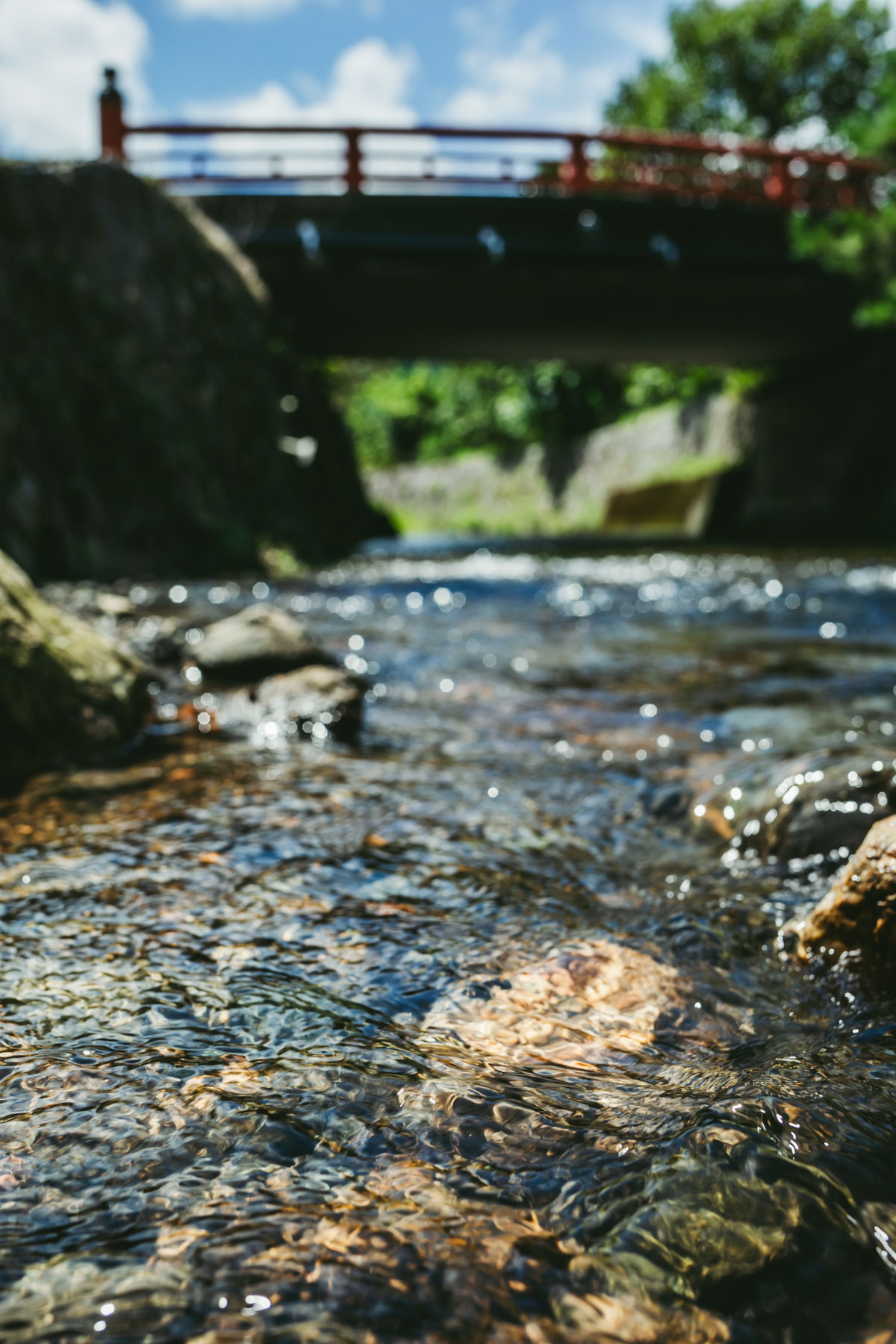 Looking up at the bridge from the Tada River
Looking up at the bridge from the Tada River -
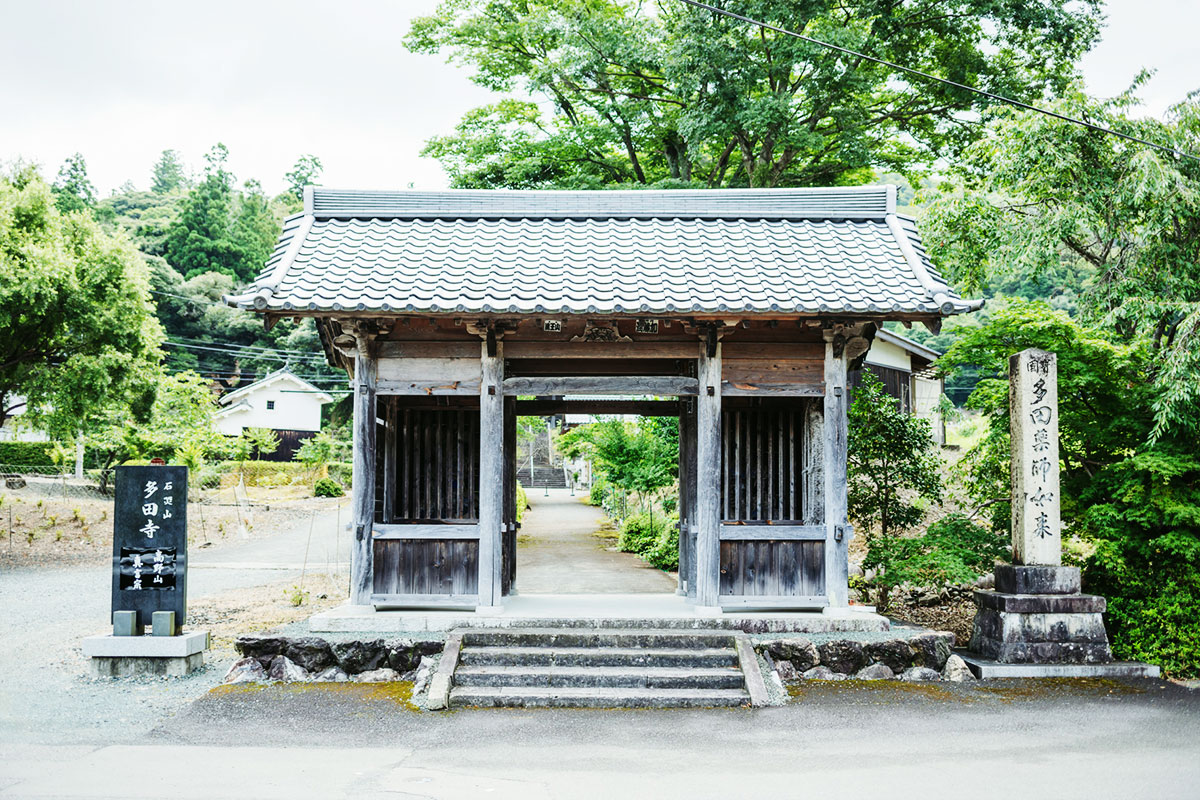 The gate relocated from Obama Castle
The gate relocated from Obama Castle
-
-
A Temple for Healing Eye Diseases
Tadaji Temple was founded by order of Empress Koken (718–770), who suffered from a sickness affecting her eyes. It is said that her ailment was cured after the temple construction was completed. Since then, Tadaji has been popularly known as “Tada no Oyakushi-san” (the Medicine Buddha Temple of Tada), and many people with various eye problems come from far and wide to pray for relief.
passing through the main gate and ascending the stairs, you will come to the main hall, which was rebuilt in 1807 through intricate assembly of untreated wood. After bowing with your hands together in prayer, take off your shoes, walk up the wooden stairs, and touch the pillars. You can feel the fine work of carpenters from centuries past in the smooth texture of the wood. Looking up, you will see the orderly arrangement of interlocking brackets that are held together by precise carpentry alone, without the aid of glue or nails. -
-
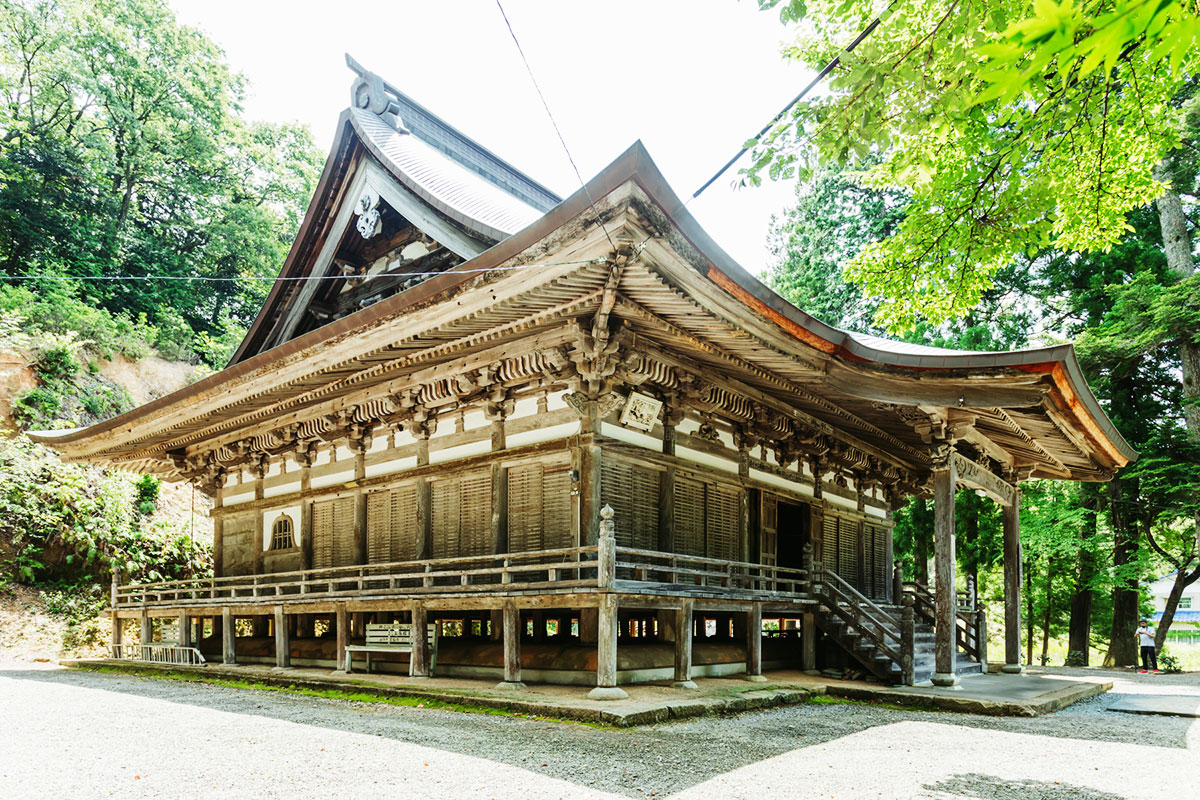 The main hall was rebuilt in the Edo period
The main hall was rebuilt in the Edo period
-
-
A Multitude of Ancient and Serene Buddhist Statues
After observing the exterior of the main hall, stroll around to the right and enter the building. The first thing you see will be a large dais with a surprising number of statues placed upon it. In the richly decorated altar with gold ornaments and a black finish is a statue of Yakushi Buddha, the deity of medicine and healing and the principal object of worship at Tadaji. It is flanked by standing statues of attendant bodhisattvas, Nikko (the bodhisattva of sunlight) to the left and Gakko (bodhisattva of moonlight) to the right.
Surrounding the altar are statues of the Four Heavenly Kings, the guardians protecting the principal object of worship. You may notice that they bear slightly comical rather than stern expressions on their round faces.
f you look at the back wall on either side of the altar, you will see statues of the Twelve Heavenly Generals painted in vivid colors. Placed in niches and framed by curtain-like carvings, they appear to be on the verge of moving, as though they were actors on a stage. -
-
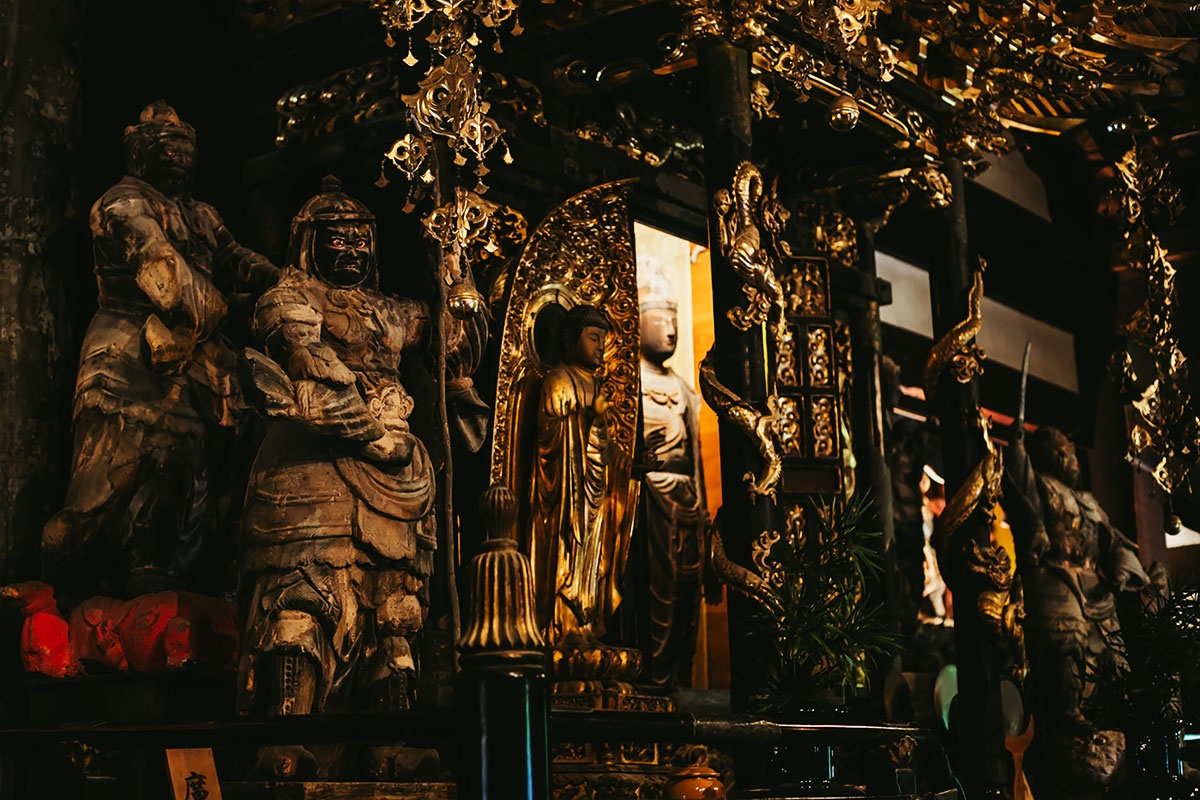 The Shumidan (altar) where many statues are placed
The Shumidan (altar) where many statues are placed -
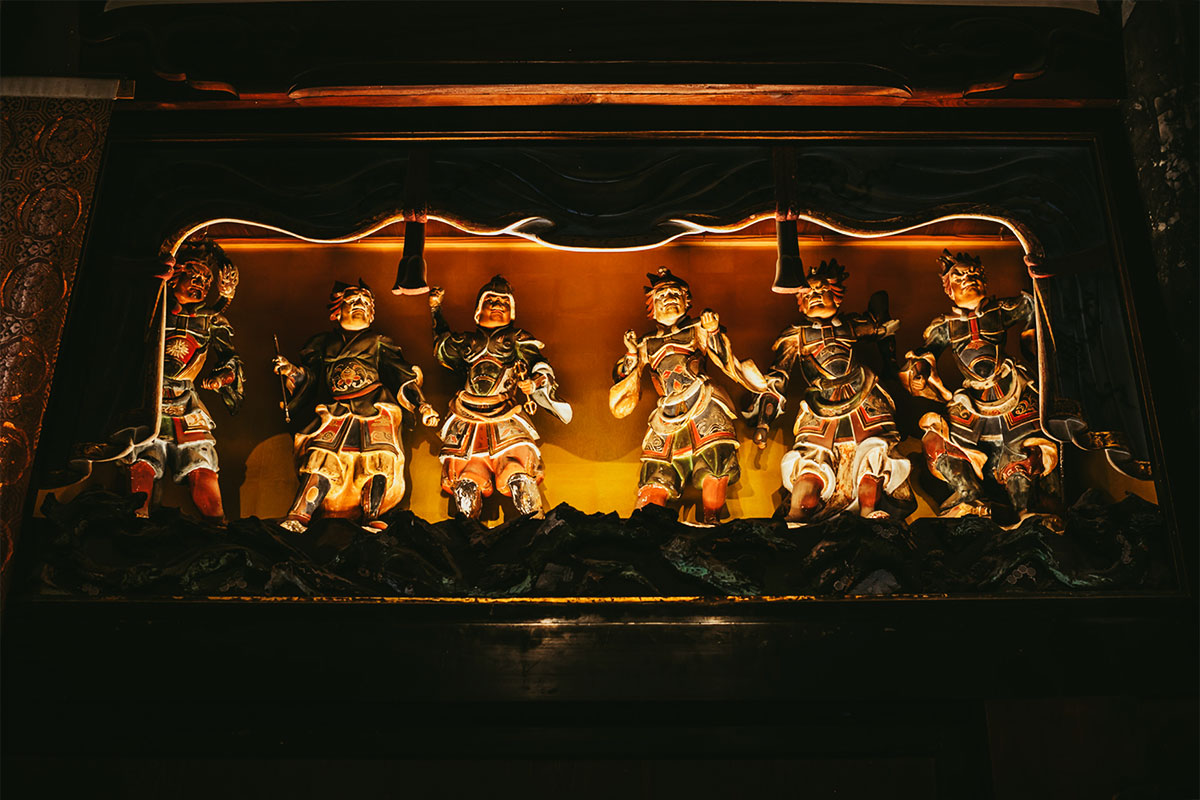 Vividly colored Twelve Divine Generals
Vividly colored Twelve Divine Generals
-
-
Stepping Into the Inner Sanctum
When you enter the main hall, the tatami mat area where you first stop to pray is called the outer sanctum, and from there you can step further into the inner sanctum, which is normally only accessible to the chief abbot. Most of the temples in Obama will allow you to enter the inner sanctum, so feel free to ask the staff for permission to do so.
Look again at the principal object of worship before you. The large Yakushi Buddha statue in the center of the altar is carved from a single block of wood and is over 2 meters tall. It is truly a sight to behold, with a cleanly delineated face, straight nose, and a robe with elegantly cascading folds. This sculpture was made in the early Heian period (794–1185), when the bodies of Buddhist divinities were depicted fuller and plumper compared to statues carved in later centuries.
The statues of Nikko Bodhisattva and Gakko Bodhisattva have a slightly more old-fashioned look compared to Yakushi Buddha and are said to have been made in the Nara period (710–794). The image of Nikko Bodhisattva is very similar to depictions of Kannon (the bodhisattva of compassion) in an eleven-headed form. Its right arm, as well as the left arm of the Gakko Bodhisattva statue, is carved unusually long, reaching the knee. This stylistic element of Buddhist statuary symbolizes the divine being’s desire to reach out and save as many people as possible.
Finally, look more closely at the Four Heavenly Kings. Observe the shape of their armor, their clothing, and the expressions of the demons upon which they tread before looking back up to sense the power in their red-rimmed eyes. -
-
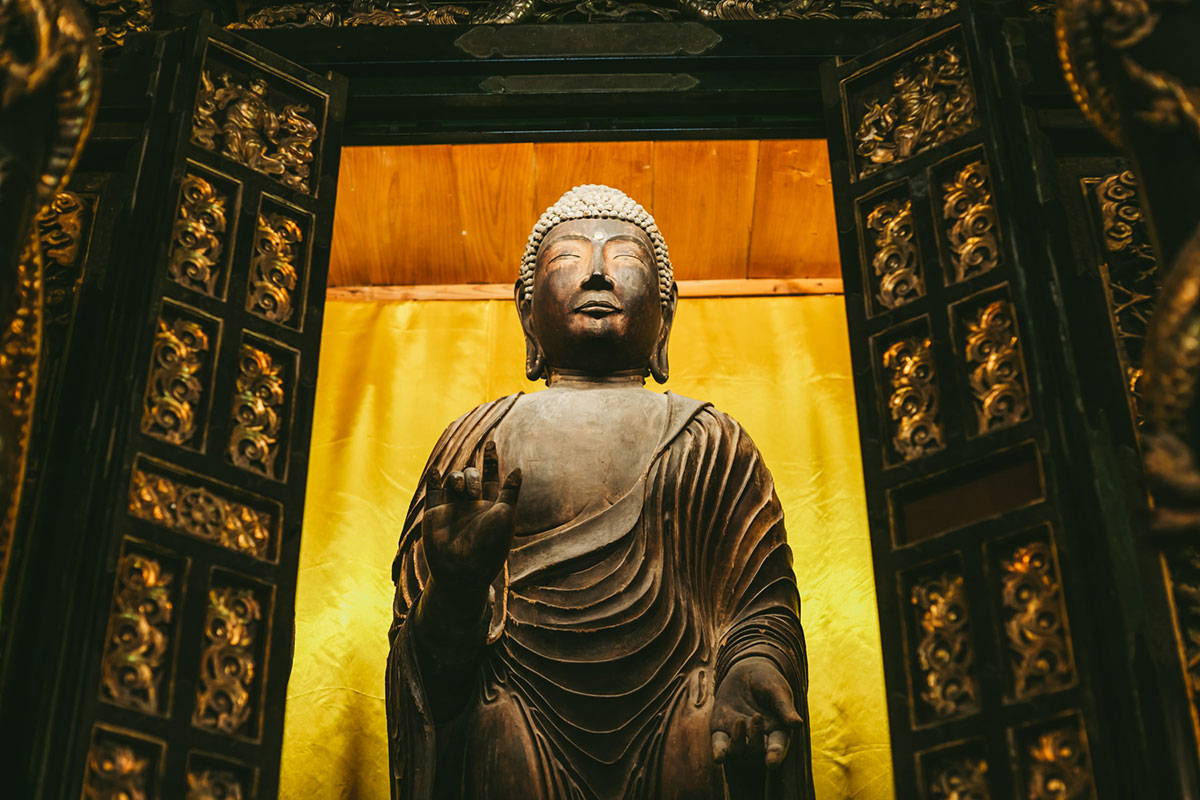 Statue of Yakushi Nyorai (Medicine Buddha)
Statue of Yakushi Nyorai (Medicine Buddha)
-
-
The People of Tada: Protectors of Buddhism
In addition to the Buddhist statues on the main dais, Tadaji enshrines three seated statues of Amida Buddha (the Buddha of Immeasurable Light and Life) and a statue of Eleven-Headed Kannon, all of which are precious relics from the late Heian period (794–1185). It is said that these statues were once the principal objects of worship at other temples nearby and were saved by the people of the village of Tada in the late nineteenth century, when an anti-Buddhist movement called haibutsu kishaku (“abolish Buddhism, destroy Shakyamuni”) spread across Japan.
In addition to statues that were protected and enshrined in Tadaji Temple, many other Buddhist statues were rescued by the people of Obama during the haibutsu kishaku era. This is evidence of the deep faith held by the residents of this area, which had the good fortune to be spared major wars during its history, allowing many precious cultural assets to survive until today. -
-
